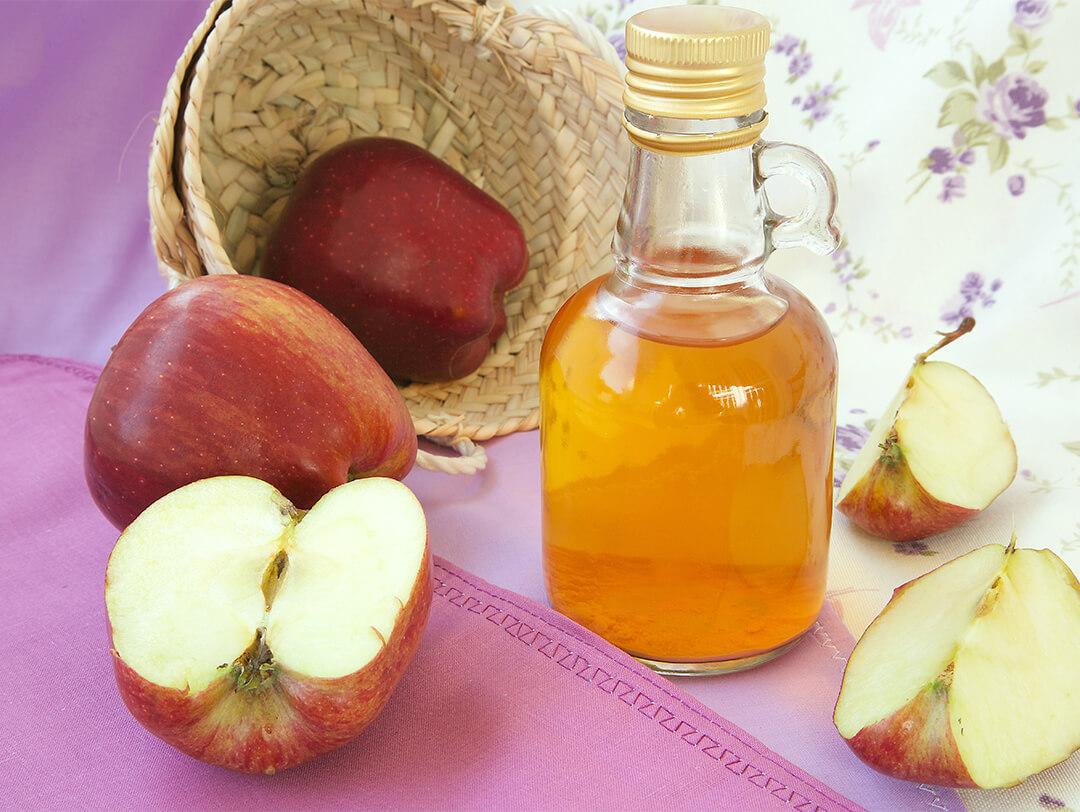Apple Cider Vinegar Is the Surprising DIY Acne Trick You're Missing



Elizabeth Denton


When it comes to breakouts, there are a lot of opinions (both good and bad) for how to get rid of them. Your friend says to add a little toothpaste, and your dermatologist tells you not to. An esthetician says your pimples are from dairy, and your doctor tells you they’re hormonal. All of these people are correct—in a way. With acne, it’s not a one-size-fits-all treatment. What works for you might not work for someone else. Many find DIY treatments helpful, especially using ingredients you can find right in your cabinet. One big favorite is apple cider vinegar (or ACV if you’re in the know).
You know apple cider vinegar is a great detoxifier for your scalp—and a yummy addition to a salad dressing—but for some, it can help with acne, too. Like with all pimple treatments, there are a few things you need to know first. So we chatted with Marie Hayag, MD, board certified dermatologist and founder of 5th Avenue Aesthetics in New York City, to get to the bottom on apple cider vinegar for acne. Read on to see if ACV could be right for you to help you banish those breakouts for good.


It's about glam time you treated yourself.
How does apple cider vinegar help with acne?
Although there has been no specific research on apple cider vinegar for acne, there are research-backed properties of ACV that show it may be beneficial in improving breakouts, says Dr. Hayag. “ACV contains acetic, citric, lactic, and succinic acids, all of which have been shown to kill acne-causing bacteria called Propionibacterium acnes or P. acnes,” she says. Plus, ACV acts sort of like a gentle, at-home chemical peel, helping improve hyperpigmentation, soften acne scars, and lead to overall glowing skin.
“The succinic acid has been shown to decrease inflammation and therefore help with scarring,” says Dr. Hayag. The lactic acid (yes, the same one you know and love from your skincare) can help improve the superficial texture of your skin. It removes the outer layer of your skin, exfoliating dead skin cells and helping healthier skin grow. This can majorly help improve scars, texture, and pigmentation. The other acids, such as malic acid, help balance the skin’s pH level, which is normally 4.5 to 5.5. “This fairly acidic environment helps keep harmful bacteria and contaminants at bay and improves skin barrier function,” adds Dr. Hayag. Sounds great, right? Well, it’s not without its side effects (keep reading).
Are there any side effects?
Those with sensitive skin may find apple cider vinegar for acne too harsh, so first-time users should be cautious. “Since it is very acidic, it can be irritating and can cause burns when directly applied to the skin,” says Dr. Hayag. To minimize irritation, always dilute ACV with water and only leave it on your skin for a short amount of time (like, seconds!). If it burns, wash it off ASAP. Beauty is not pain in this case, and you don’t want to burn your skin causing more issues than what you started with. Dr. Hayag recommends doing a patch test first to see if your skin can tolerate apple cider vinegar as an acne treatment. If it can, there are a few ways you can use it, starting slowly and working up to a more exfoliating treatment.
What skin types does apple cider vinegar work best for?
Not surprisingly, those with oily and acne-prone skin types find ACV works best at minimizing breakouts. Those with sensitive skin might find it too harsh, and those with dry skin might find it too drying. Always follow up an ACV treatment with extra hydration, such as gentle, peptide-enriched moisturizer. Those with oily and acne-prone skin will want to use an oil-free, lightweight moisturizer that’s sure not to clog pores and cause future breakouts.
How should you use apple cider vinegar for acne?
For the best results, Dr. Hayag recommends using “organic apple cider vinegar that contains ‘the mother,’’' the cloudy substance at the bottom of the bottle. It looks a little icky, but this is where the good stuff lives. “This layer contains the enzymes, proteins, and beneficial bacteria that are responsible for ACV’s health benefits,” she says. Though, without preservatives, you’ll want to be extra careful as it’s much more potent.
Dr. Hayag recommends a few ways to use apple cider vinegar. First, as a cleanser, mix a quarter cup of warm water with one tablespoon of apple cider vinegar. If you prefer to use ACV as a toner, start off slowly applying the following solution one to three times per week with a cotton ball: for sensitive skin, use one part apple cider vinegar to five parts water; for moderate acne, use one part apple cider vinegar to four parts water; and for severe acne use one part apple cider vinegar to three parts water. Those with severe acne can try using ACV as both a cleanser and toner.
You can also use ACV as an acne spot treatment, which might be even better for those with dry or sensitive skin, who don’t need to use it all over their face. Apply the diluted solution directly to the pimples to dry them out. Prefer to have an at-home spa day? If you have a facial steamer at home, you can add four tablespoons of ACV to two cups of water and heat the mixture. “Cover your head with a towel and place your face above the hot mixture, being careful to not get in contact with it,” says Dr. Hayag.
Next time you head to the store, be sure to pick up this surprising acne-fighter. Want in on all the Glam Bag fun? Take our Beauty Quiz now to get started. And don’t forget to check us out on Instagram and Twitter @IPSY.
Liked this post? Share!
Related Stories


Skin
How to Adjust Your Skincare Routine for Mature Skin in the Winter
Published on Dec 4, 2025 • 7 min read


Skin
Meet the Best Moisturizers for Winter, According to Dermatologists
Published on Dec 1, 2025 • 9 min read


Skin
What Is Inflammaging—and Why Everyone’s Talking About It
Published on Dec 1, 2025 • 8 min read


Skin
6 Skincare Trends to Have on Your Radar in 2026, According to Experts
Published on Dec 1, 2025 • 7 min read


Skin
We Grabbed Our Crystal Ball and Found These 6 Skincare Predictions for 2025
Published on Dec 10, 2024 • 7 min read


Skin
Simple Self-Care Tips That Actually Make a Difference
Published on Nov 13, 2025 • 12 min read


Skin
These 9 Face Scrubs Will Unlock Soft and Smooth Skin on Contact
Published on Nov 5, 2025 • 10 min read


Skin
10 Thanksgiving Foods That Will Have Your Skin Coming Back for Seconds
Published on Oct 15, 2025 • 7 min read


Beauty Picked Just for You
Get 5 products worth up to $70
Plus exclusive access to epic deals up to 80% off
Starting at just $14/month. Cancel anytime.